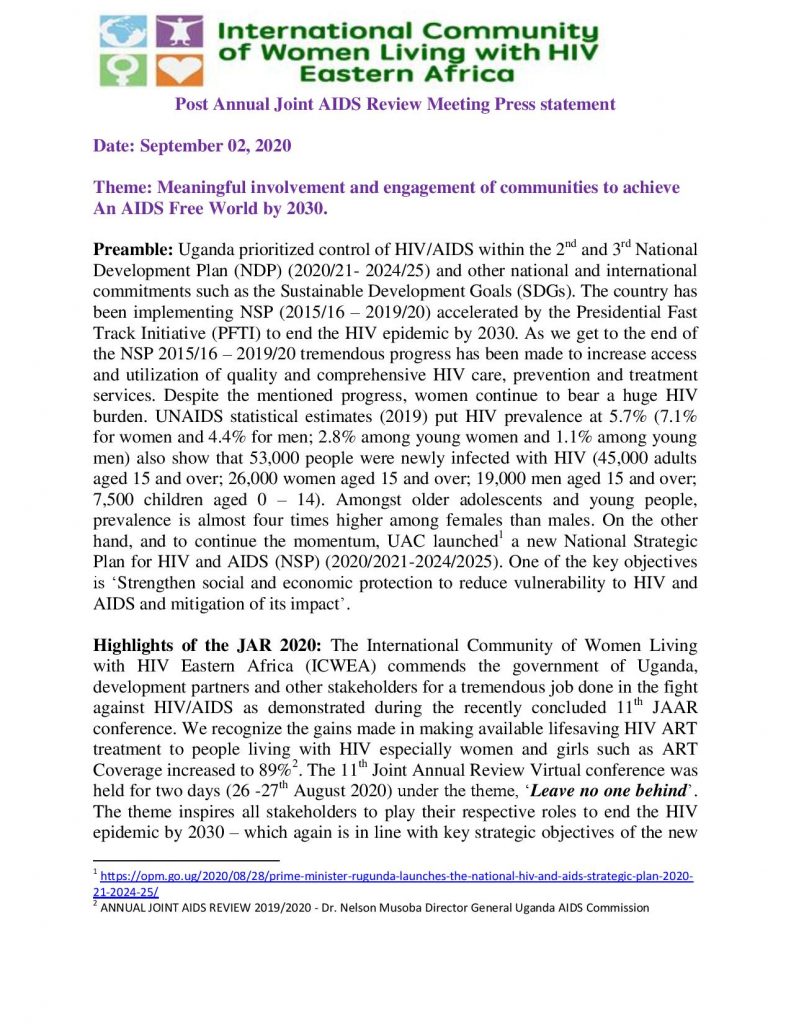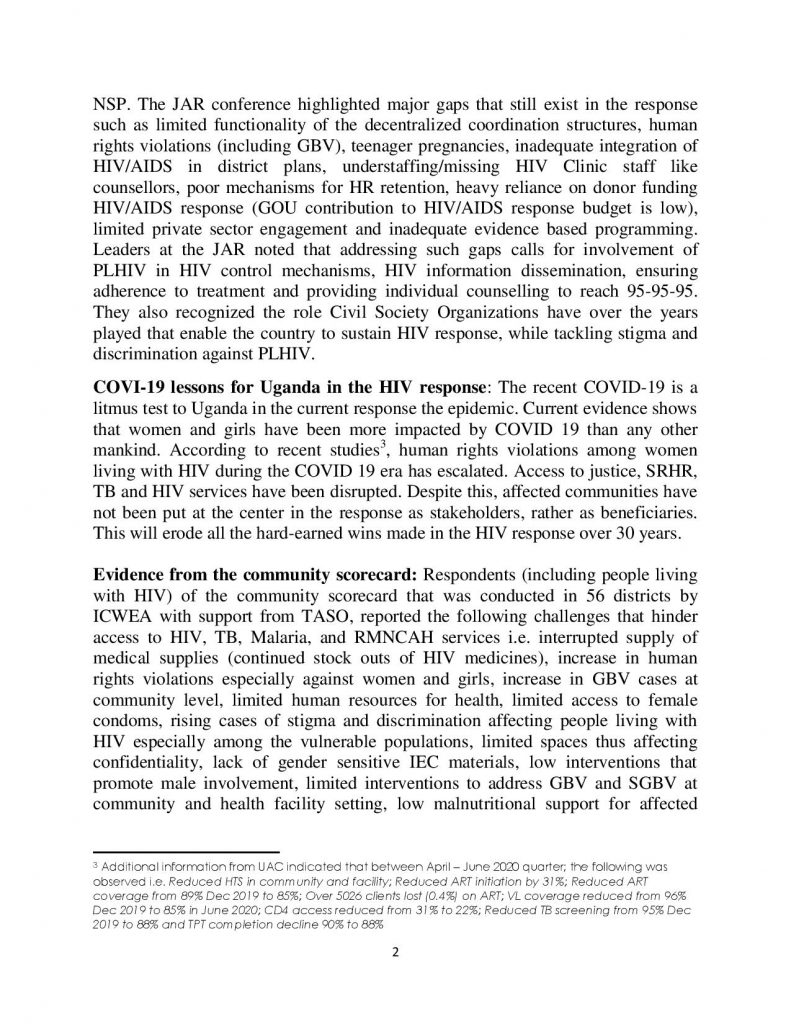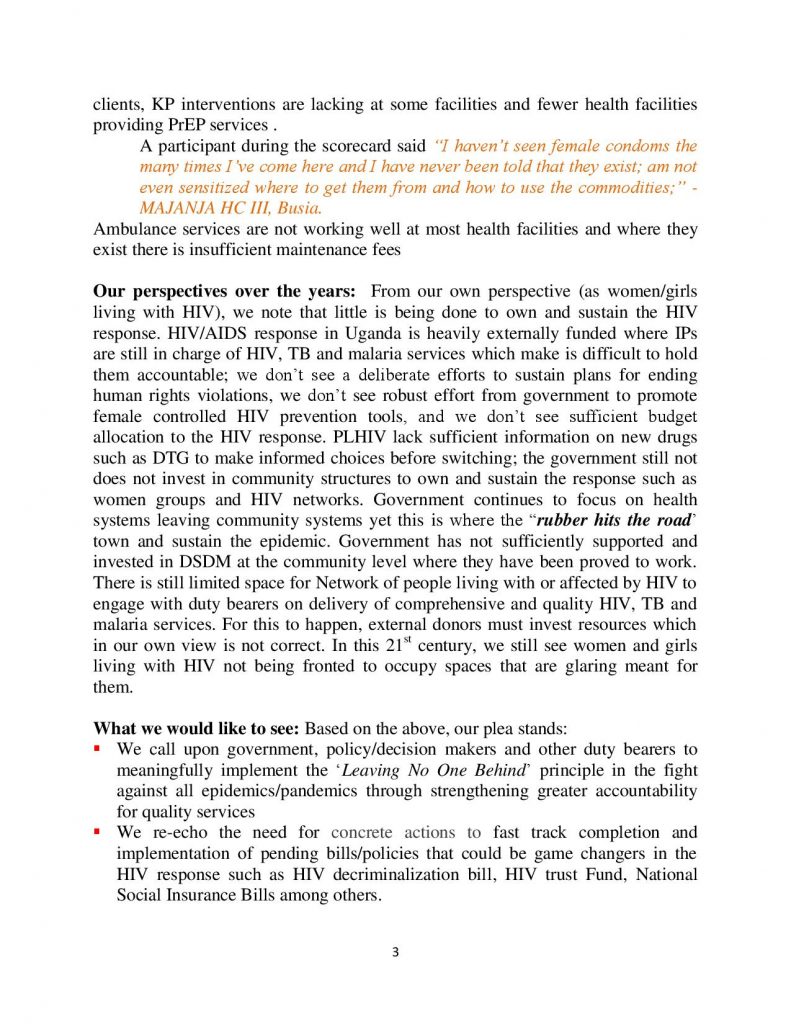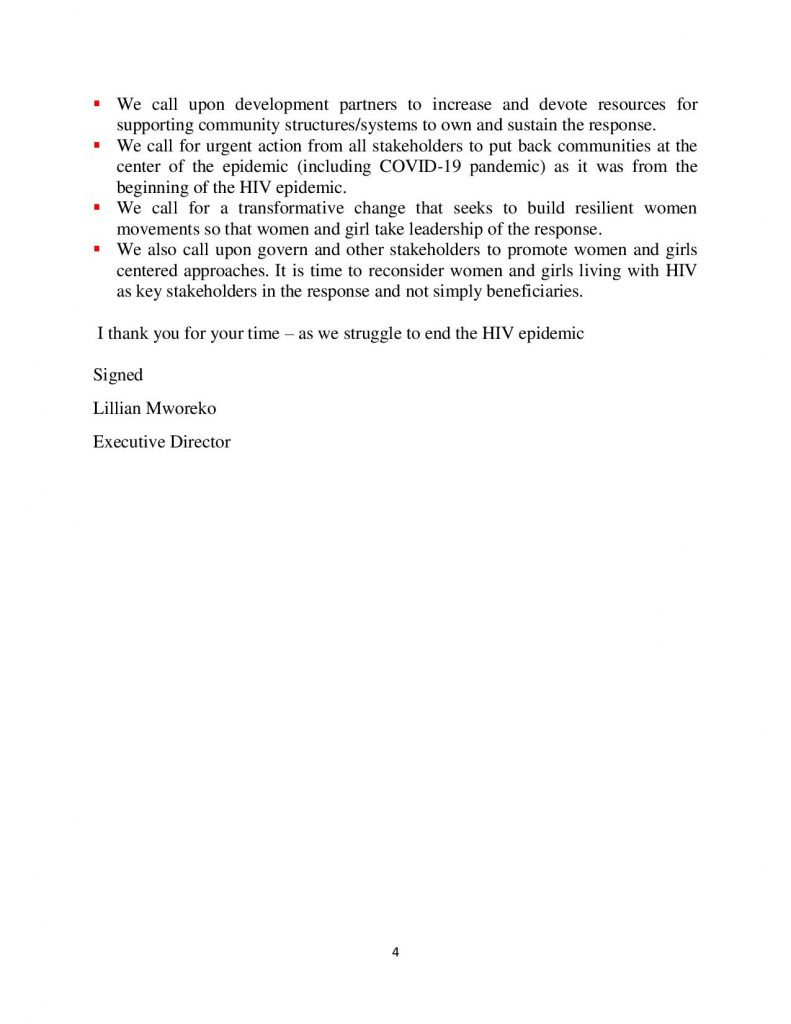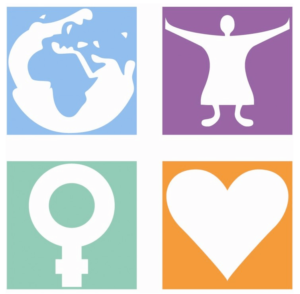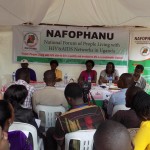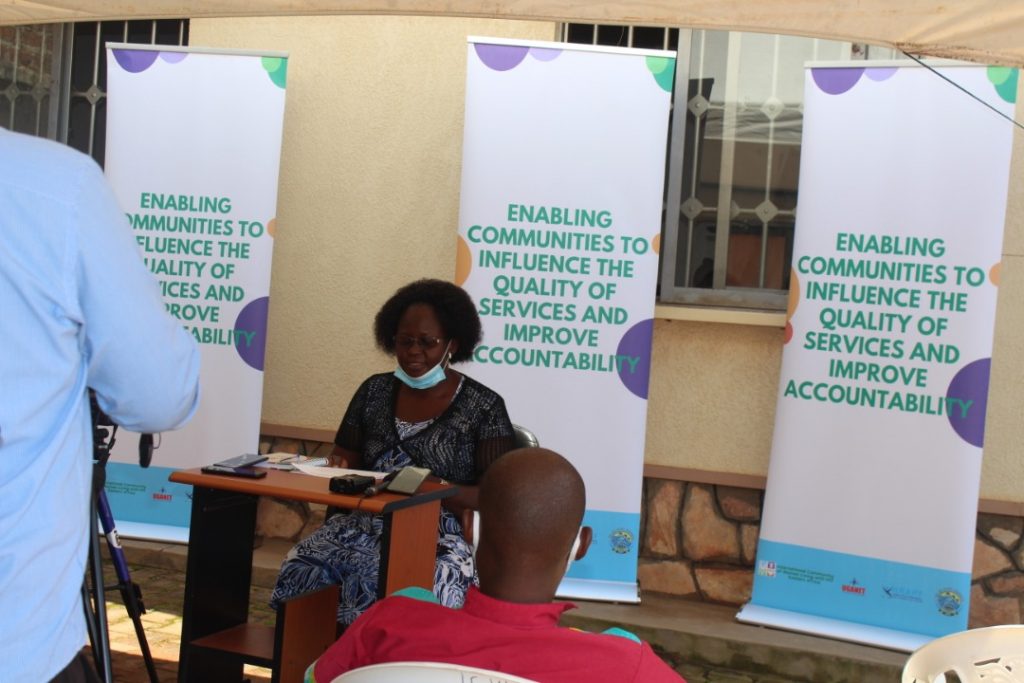
Date: September 02, 2020
Theme: Meaningful involvement and engagement of communities to achieve An AIDS Free World by 2030.
Preamble: Uganda prioritized control of HIV/AIDS within the 2nd and 3rd National Development Plan (NDP) (2020/21- 2024/25) and other national and international commitments such as the Sustainable Development Goals (SDGs). The country has been implementing NSP (2015/16 – 2019/20) accelerated by the Presidential Fast Track Initiative (PFTI) to end the HIV epidemic by 2030. As we get to the end of the NSP 2015/16 – 2019/20 tremendous progress has been made to increase access and utilization of quality and comprehensive HIV care, prevention and treatment services. Despite the mentioned progress, women continue to bear a huge HIV burden. UNAIDS statistical estimates (2019) put HIV prevalence at 5.7% (7.1% for women and 4.4% for men; 2.8% among young women and 1.1% among young men) also show that 53,000 people were newly infected with HIV (45,000 adults aged 15 and over; 26,000 women aged 15 and over; 19,000 men aged 15 and over; 7,500 children aged 0 – 14). Amongst older adolescents and young people, prevalence is almost four times higher among females than males. On the other hand, and to continue the momentum, UAC launched[1] a new National Strategic Plan for HIV and AIDS (NSP) (2020/2021-2024/2025). One of the key objectives is ‘Strengthen social and economic protection to reduce vulnerability to HIV and AIDS and mitigation of its impact’.
Highlights of the JAR 2020: The International Community of Women Living with HIV Eastern Africa (ICWEA) commends the government of Uganda, development partners and other stakeholders for a tremendous job done in the fight against HIV/AIDS as demonstrated during the recently concluded 11th JAAR conference. We recognize the gains made in making available lifesaving HIV ART treatment to people living with HIV especially women and girls such as ART Coverage increased to 89%[2]. The 11th Joint Annual Review Virtual conference was held for two days (26 -27th August 2020) under the theme, ‘Leave no one behind’. The theme inspires all stakeholders to play their respective roles to end the HIV epidemic by 2030 – which again is in line with key strategic objectives of the new NSP. The JAR conference highlighted major gaps that still exist in the response such as limited functionality of the decentralized coordination structures, human rights violations (including GBV), teenager pregnancies, inadequate integration of HIV/AIDS in district plans, understaffing/missing HIV Clinic staff like counsellors, poor mechanisms for HR retention, heavy reliance on donor funding HIV/AIDS response (GOU contribution to HIV/AIDS response budget is low), limited private sector engagement and inadequate evidence based programming. Leaders at the JAR noted that addressing such gaps calls for involvement of PLHIV in HIV control mechanisms, HIV information dissemination, ensuring adherence to treatment and providing individual counselling to reach 95-95-95. They also recognized the role Civil Society Organizations have over the years played that enable the country to sustain HIV response, while tackling stigma and discrimination against PLHIV.
[1] https://opm.go.ug/2020/08/28/prime-minister-rugunda-launches-the-national-hiv-and-aids-strategic-plan-2020-21-2024-25/
[2] ANNUAL JOINT AIDS REVIEW 2019/2020 – Dr. Nelson Musoba Director General Uganda AIDS Commission
Read our full Press Statement here:
